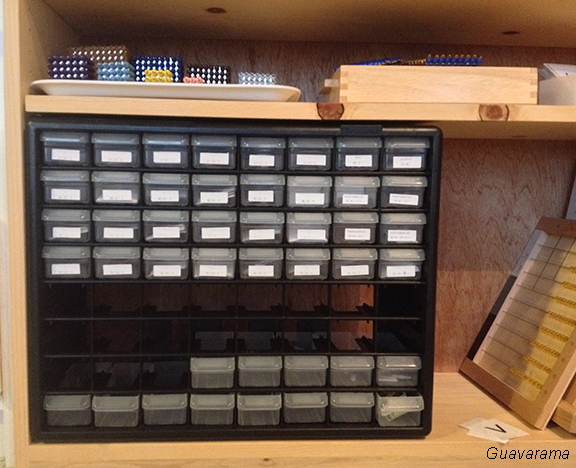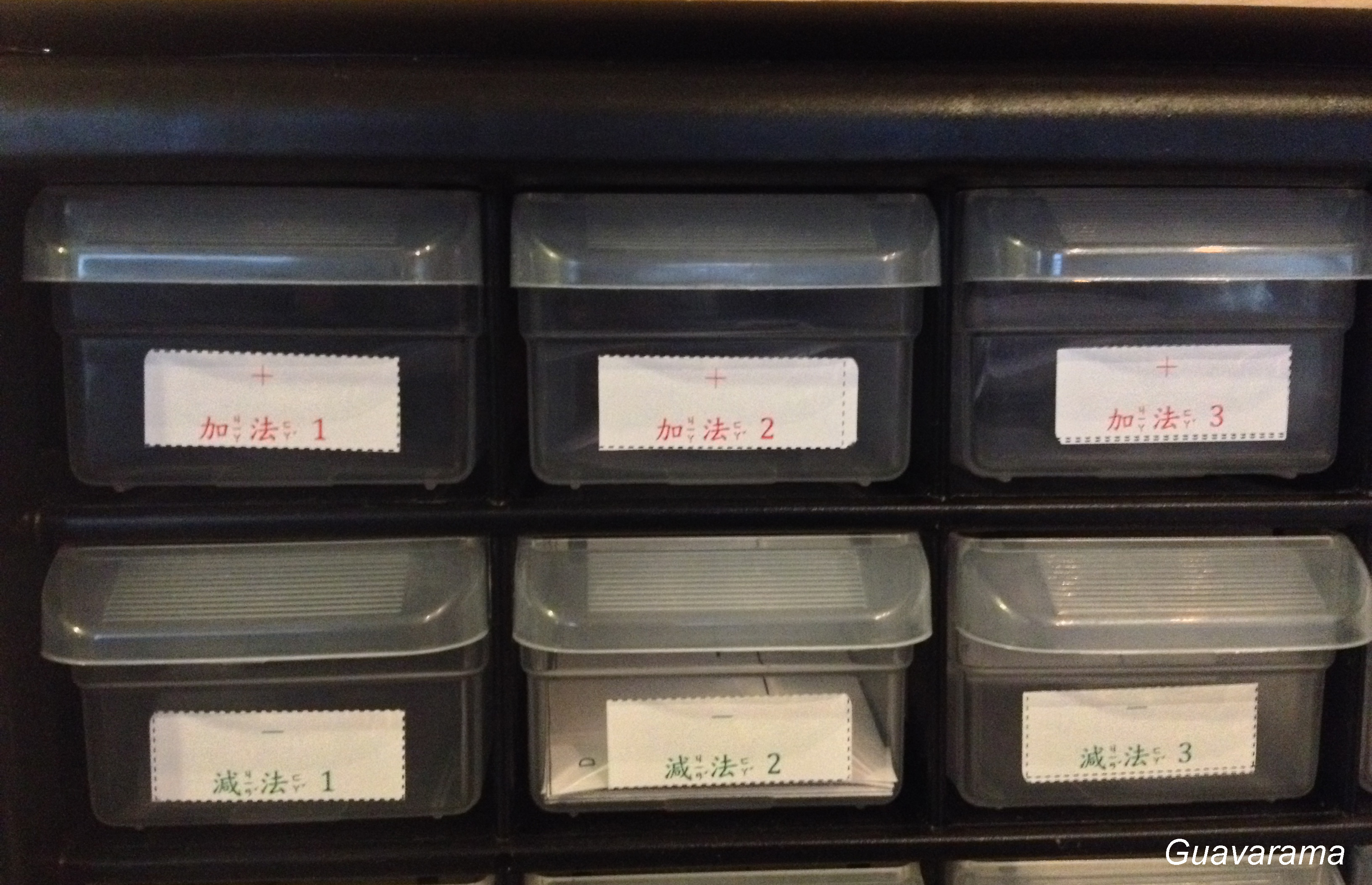Finally, after a whole year, I managed today to finish my equation slips and start filling my math cabinet. I borrowed the idea from What Did We Do Today, as usual.
But, my math cabinet post isn’t really about math cabinets.
It’s really about autonomy.
I had a really hard time doing this last year because I was very confused on the concept of equation slips. We weren’t really introduced to them in our training. The equation slips I saw were so detailed. For example, for addition, they would have static and dynamic, just like our training. But then they would break it down into 2 digits + 2 digits, 3 digits + 2 digits, 4 digits + 4 digits, etc. Some equation slips I’ve seen have those special cases like 0’s, 0’s in unit place, 0’s in tens place, etc. I assumed that a child was to work through each step of these equations, which are increasing in difficulty much like how it’s presented in regular schools. Totally different from the way I learned addition and subtraction in class. Even multiplication, was split much finer than what we learned.
Finally, during my math class, my trainer tells me that students should be encouraged to generate their own math problems, she was mostly against pre-printed equation slips. She said that they will hit those special cases during their work somehow and if I weren’t sure I could just do a quick assessment before allowing them to move on. I had a Montessori teacher friend who talked about how her students decided to write a huge long string of numbers and divide them. I saw the pic. It must have been 30+ digits long. They ran out of paper and had to tape more and more paper on the first sheet in order to solve the equation. When I hear stories like that, I see how not having worksheets can really spark a child’s imagination in what they may want to try. The elementary child really love big things, and trying things that you did not talk about during your presentation.
But, then I see from the What Did We Do Today blog comments that another homeschool AMI trained mom that the homeschool room is different because you don’t have a group of students to kind of spur you on or indirectly show you things you wouldn’t have thought of yourself. So she sees the use of equation slips. I’m paraphrasing what I think she said.
All this to say, for my own sanity, I printed a bunch of equation slips. But my hope is that Thumper and Astroboy will make their own equations as well and find joy in them. To that end, I’m buying some 10-sided dice for that purpose. What I find equations useful for is letting me understand a potential sequence of learning for children if they’re stuck on the concept. Maybe 4 digit by 4 digit addition is too hard, then you can start with 2 digit + 2 digit. But honestly, I don’t quite understand why you have to progress that way otherwise. Because there really is no difference between adding 1234+4321 or 12+21.
You can get equation slips from Montessori Printshop, Montessori For Everyone, NAMC. Oh, I’ve seen a school just print out all of NAMC’s equations and put it in a binder. Most other people cut them up. I realized last year that really, Montessori materials are sometimes not different from traditional materials. But they really like to cut things up. I think the reason is because 1) it makes it not as intimidating working on 1 problem rather than staring at a whole worksheet, and 2) the children are moving equation slips around, writing the equations down on their own workbook, etc. Movement is important in a Montessori classroom.
My Math Cabinet
So my math cabinet has the following items from top to bottom: (d is digits) I got mine mostly from Montessori For Everyone and then added a few more for division.
- Row 1: addition boxes 1-6 (2d+2d static & dynamic, 3d+3d static & dynamic, 4d+4d static & dynamic)
- Row 2: subtraction boxes 1-6 (same idea as Row 1)
- Roe 3: multiplication boxes 1-6 (2dx1d, 3dx1d, 4dx1d, 4dx2d, 4dx2d, 4dx4d)
- Row 4: Division boxes 1-8 (3d/1d remainder & no remainder, 3d/2d, 4d/1d, 4d/2d)
I also put my dices, empty equation slips, math symbols in there.
I stole some of the drawers for my bead chains. But there are still some left for more equations…I’ll probably fill it with fractions during my next round of math prep.
Yes, I take terrible pictures. Sorry.
Autonomy
What I will have Thumper do is to work methodically through each drawer. As I mentioned in my math summaries last year, my trainer said for math it’s the process that’s important, not the solution. It’s especially true because the child will work on the same math concept in Montessori through increasingly abstract level of concrete materials. So I’ll ask Thumper to work through 1-3 problems in each drawer for the operation she’s learning. And when she’s done, she probably has mastered the concept. It’ll get repeated again when she uses a more abstract material. Ideally when she starts calculating problems without the aid of materials, then we are done.
I honestly don’t know if she will fight this because 18 problems for each operation, and she’ll do it twice for addition/subtraction due to different materials (total 36 problems each); 4 times for multiplication (total 72 problems) seems quite a lot. I wonder how many problems kids end up doing in traditional school?
To me, this whole process is slightly different than working through a booklet of questions (which we also have), and working through worksheets, which I did last year as a stop gap. Instead of assigning a whole worksheet, now Thumper and I can have a work plan meeting and decide she’s going to work on addition operations. Then she goes over and chooses the equation slips she wants to work on and write those down on her notebook. People have a tendency to want to fill in everything in a page, or in my case, wanting Thumper to do every problem in a worksheet. Taking the worksheet away removes that. It also gives her a choice in what problem she wants to do, within the larger framework of no choice (having math operations as a “todo” on her work plan).
Maybe this isn’t much different than a pretty self-motivated homeschool child who wakes up and opens their workbooks. But I somehow like the image of a child going to a cabinet full of equation slips and choosing the ones they want to work do. I’m not quite sure why………..


